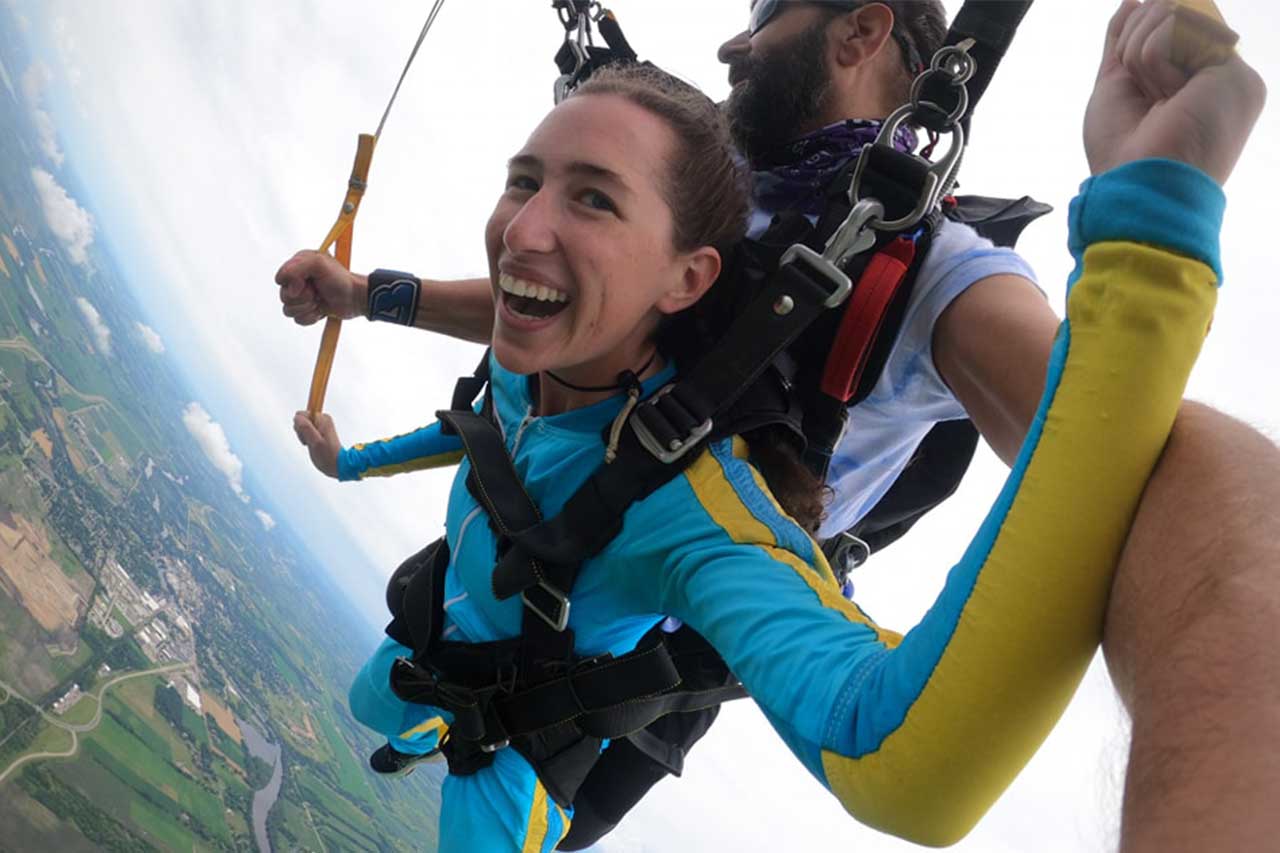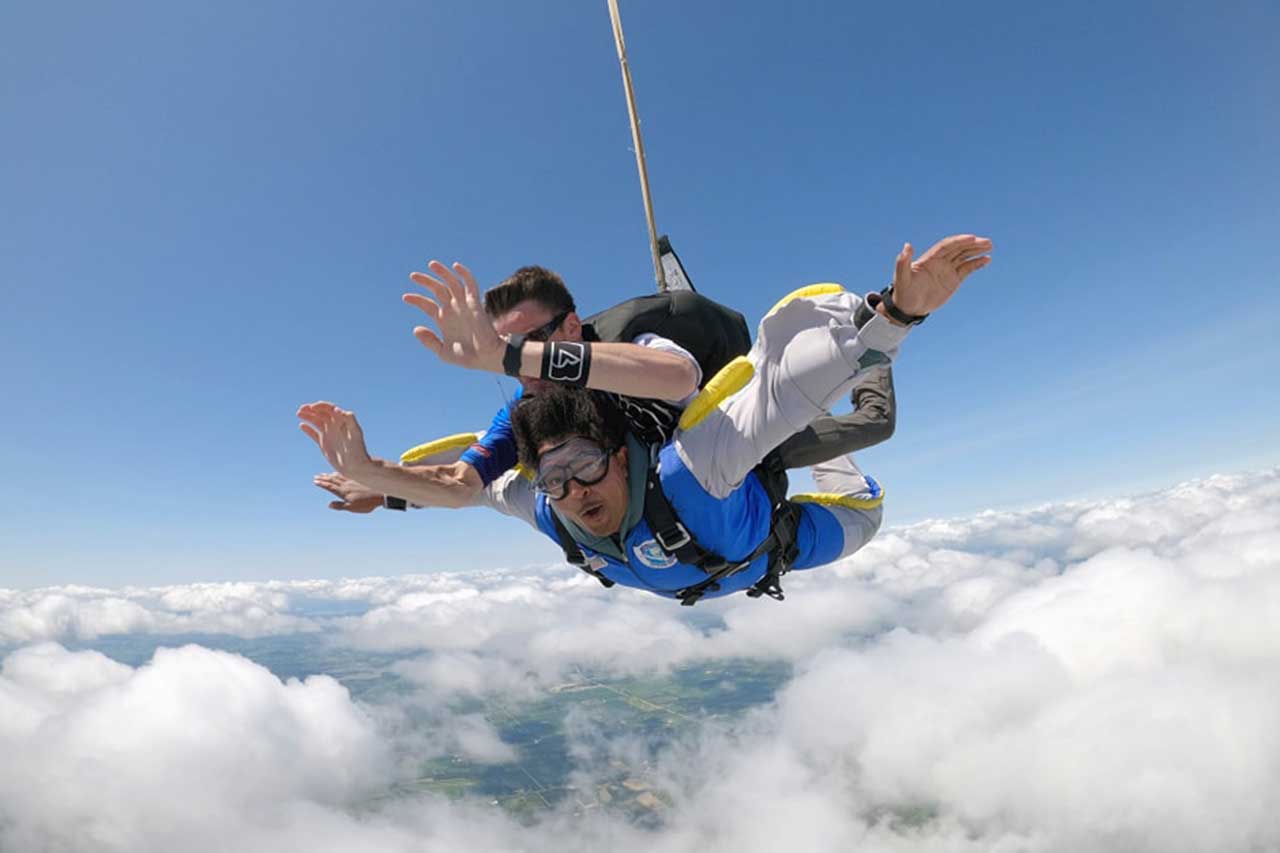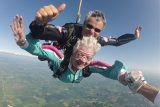The History of Skydiving
General
Posted by: Wisconsin Skydiving Center 9 months ago
To fully appreciate modern-day skydiving, we have to dig into some skydiving background. The history of skydiving is vast for such a niche sport!
When people think about the early days of our sport, they tend to envision paratroopers jumping round parachutes or people doing daring stunts. But the first skydive actually occurred centuries before either of these feats! Skydiving history is open to interpretation, because of mixed definitions of what constitutes a skydive. The first skydive was technically from a balloon … does that count even though it wasn’t from a plane!? These are the questions skydiving history buffs debate. Let’s jump into some skydiving origins!

Who Invented Skydiving?
What is the history of parachute jumping? Let’s start with the history of parachutes themselves! The concept of descending from the sky was first recorded in China in the 1100s! And while we don’t have evidence that that particular parachute invention was brought to life, the Chinese are credited with establishing the history of the parachute.
So, when was skydiving invented as we know it? Well, we like to think that skydiving – or rather, the desire to fly – was ingrained in us long before any documentation. But the next mile marker in parachute history came a few hundred years after the Chinese when Leonardo da Vinci drew the first parachute that looked spherical. His illustration ended up being the rough design for the first parachute made that was viable!
Was da Vinci, then, the person who invented skydiving? Maybe, maybe not. Do we draw a line from the first parachute invented directly to the concept of skydiving? Do we know who created the parachute by actually sewing fabric together? So many questions! Let’s take a look at what we DO know about the origin of skydiving.
Interesting Facts About Skydiving: A Historical Timeline
The Early Years
- 1100s: The Chinese draw a model of a very (very) rough contraption resembling a parachute.
- 1495: da Vinci sketches a spherical parachute – these are commonly called “rounds” today and are not regularly jumped by civilians.
- 1797: André-Jacques Garnerin jumps from a balloon and is deemed the first person to parachute.
- 1799: Jeanne-Geneviève Labrosse, who happened to be Garnerin’s wife (talk about a power couple!), is the first woman to leap from a balloon.
Modern Developments
- 1911ish: If we’re counting skydiving as jumping from a moving airplane and not a balloon, then the first skydiver is either Albert Berry or Grant Morton. They’re both credited with the first parachute jump from a forward-moving aircraft!
- 1918: The Italian military conducts the first military-related parachute jump.
- 1919: The ripcord is invented by Leslie Irvin and Floyd Smith! This revolutionized how jumpers deploy their parachutes and brought the dream of freefall into reality.
- 1944: United States paratroopers show how effective skydiving can be in warfare during WWII.
The Rise of Sport Skydiving
- 1946: The United States Parachute Association (USPA) is established in New York. The USPA is a primary governing body for skydivers today, and has grown to well over 40,000 members! That’s quite the leap from circa 100 constituents in 1946.
- 1959: Orange, Massachusetts becomes home to the first non-military parachuting school.
- 1962: The inaugural World Parachuting Championships are held on American soil! Skydiving championships still take place at national and international levels today and feature multiple disciplines in the sport.

Innovations and Expansions
- 1970s: Skydivers experiment with group jumps and switch from round to rectangular (called square) parachutes. These enhanced maneuverability, safety, and kicked the door wide open to even more canopy design advancements. We use square parachutes today in most civilian and military skydives.
- 1982: Bill Booth invents the 3-ring release system. This system is on every single skydiving rig today and allows for an efficient cutaway of the main canopy in the event the skydiver needs to use their reserve parachute.
- 1983: Ted Strong pioneers tandem skydiving, making the thrill of the jump accessible to the majority.
- 1989: The Automatic Activation Device (AAD) is created. AADs save lives! These devices fasten inside the skydiving rig and react to air pressure (altitude) and velocity (speed) to know how high the skydiver is and how quickly they’re falling.
Skydiving Today
Today, skydiving continues to thrive as a popular sport for first-time adventure-seekers and passionate enthusiasts. The sport is constantly advancing and renowned for being inclusive, uniting people of all ages and unique paths of life. 2024 goes down as the inaugural year of World Skydiving Day where over THIRTY THOUSAND skydives were made across the world – we can’t wait to break the record next year!
Ready to be part of skydiving history? Book your jump today!



